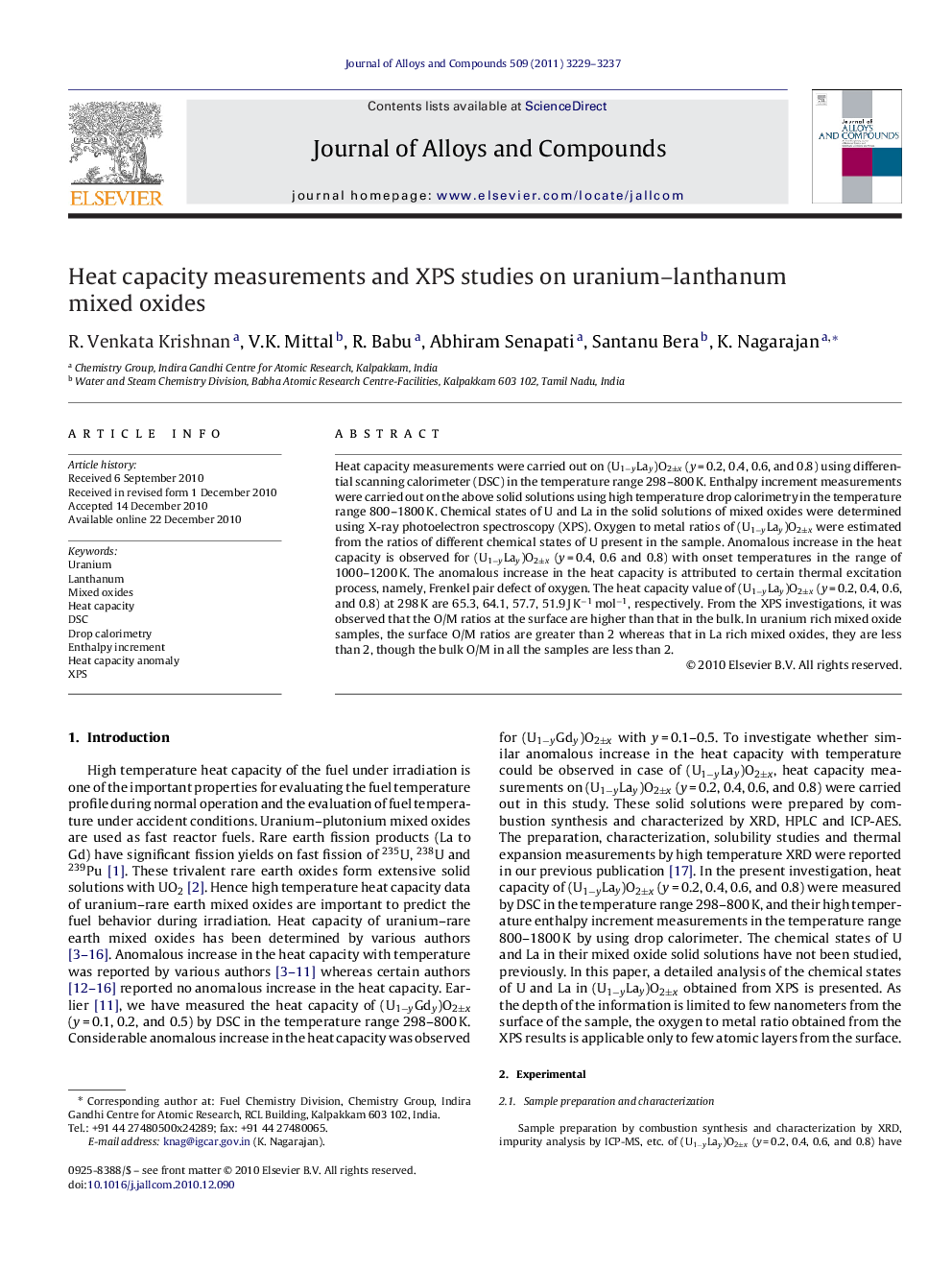| Article ID | Journal | Published Year | Pages | File Type |
|---|---|---|---|---|
| 1617954 | Journal of Alloys and Compounds | 2011 | 9 Pages |
Heat capacity measurements were carried out on (U1−yLay)O2±x (y = 0.2, 0.4, 0.6, and 0.8) using differential scanning calorimeter (DSC) in the temperature range 298–800 K. Enthalpy increment measurements were carried out on the above solid solutions using high temperature drop calorimetry in the temperature range 800–1800 K. Chemical states of U and La in the solid solutions of mixed oxides were determined using X-ray photoelectron spectroscopy (XPS). Oxygen to metal ratios of (U1−yLay)O2±x were estimated from the ratios of different chemical states of U present in the sample. Anomalous increase in the heat capacity is observed for (U1−yLay)O2±x (y = 0.4, 0.6 and 0.8) with onset temperatures in the range of 1000–1200 K. The anomalous increase in the heat capacity is attributed to certain thermal excitation process, namely, Frenkel pair defect of oxygen. The heat capacity value of (U1−yLay)O2±x (y = 0.2, 0.4, 0.6, and 0.8) at 298 K are 65.3, 64.1, 57.7, 51.9 J K−1 mol−1, respectively. From the XPS investigations, it was observed that the O/M ratios at the surface are higher than that in the bulk. In uranium rich mixed oxide samples, the surface O/M ratios are greater than 2 whereas that in La rich mixed oxides, they are less than 2, though the bulk O/M in all the samples are less than 2.
Research highlights▶ Heat capacity measurements were carried out on (U1−yLay)O2±x (y = 0.2, 0.4, 0.6, and 0.8) using differential scanning calorimeter (DSC) in the temperature range 298–800 K. ▶ Enthalpy increment measurements were carried out on the above solid solution using high temperature drop calorimetry in the temperature range 800–1800 K. ▶ Chemical states of U and La in the solid solutions of mixed oxides were determined using X-ray photoelectron spectroscopy (XPS). ▶ The anomalous increase in the heat capacity is attributed to certain thermal excitation process namely Frenkel pair defect of oxygen. ▶ From the XPS investigation, it is observed that the O/M ratio at the surface is higher than that to the bulk. ▶ In uranium rich mixed oxide samples, the surface O/M is greater than 2 whereas that in La rich mixed oxides, it is less than 2, though the bulk O/M in all the samples are less than 2.
